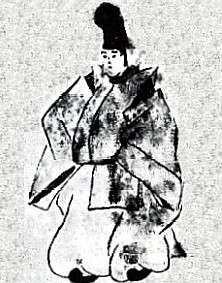Tokugawa Munetake

Tokugawa Munetake (徳川 宗武, January 21, 1716 – July 15, 1771) was a Japanese samurai of the mid-Edo period, also known as Tayasu Munetake (田安 宗武). The first head of the Tayasu branch of the Tokugawa clan, he held daimyo-level income, but was not a daimyo himself, instead having his residence inside the Tayasu gate (Tayasu-mon 田安門) of Edo Castle.
The second son of the eighth shogun Tokugawa Yoshimune, Munetake was considered by some as the logical choice for heir, as he was both physically fit and also well-educated. However, Yoshimune preferred the route of primogeniture, instead selecting his son Ieshige as heir. Munetake subsequently turned his attention to writing and scholarship, and set the Tayasu house apart from the other two gosankyo houses by keeping it spartan. He had several sons who were brought up in this spartan environment, one of whom was the famed reformer Matsudaira Sadanobu.
As a scholar, Munetake was a student of kokugaku. He studied under Kada Arimaro and Kamō Mabuchi, eventually producing the kokugaku texts Kokka hachiron yogen (国歌八論余言) and Tenkō-gon (天降言). He was also an accomplished poet.
As head of the prestigious Tayasu-Tokugawa house, Munetake held the court title of gon-chūnagon (権中納言) and the junior 3rd court rank (jusanmi 従三).
References
| Preceded by None |
Tayasu-Tokugawa family head 1731-1771 |
Succeeded by Tokugawa Haruaki |
|